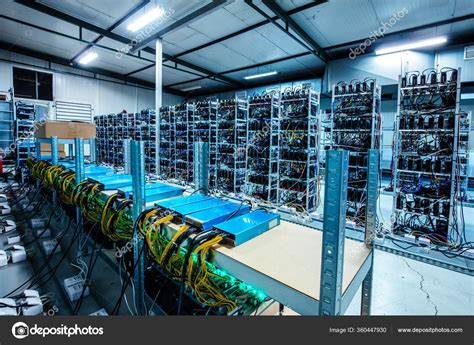بلاگ
Ethereum: Can I use Bitcoin mining as a data furnace to heat my home?
Ethereum: Can I Use Bitcoin Mining as a Data Burner for Home Heating?
As more and more people turn to alternative energy sources, the concept of using waste heat from renewable energy technologies such as solar and wind power to heat homes is gaining traction. One of these options is Bitcoin mining, which generates significant amounts of heat that can be used to heat homes, reducing our reliance on traditional energy sources.
In this article, we’ll explore whether it’s feasible to use Bitcoin mining as a data center to heat your home, and what the environmental and economic implications are.
What happens during Bitcoin mining?
Bitcoin mining is the process of confirming transactions on the Ethereum blockchain and is done by solving complex mathematical problems. This process requires significant computing power, which is provided by specialized hardware known as graphics processing units (GPUs). Each GPU has hundreds of thousands of tiny cores that work together to perform calculations at incredible speeds.
Heat generated during Bitcoin mining
Bitcoin mining generates a huge amount of heat due to the high power consumption of GPUs. According to estimates, a single Ethereum node can generate around 200-250 watts of heat. Over a 24-hour period, this translates to approximately 4800 -5000 watt-hours (Wh) of energy consumption.
Using Bitcoin Mining as a Data Furnace
Now let’s explore the possibility of using this excess heat to heat homes. One potential solution is to install a data furnace or heat recovery system that captures and uses the heat generated by Bitcoin mining.
Here are a few ways you can potentially use the excess heat from Bitcoin mining:
- Geothermal Heating: If your home is located near an underground well or geothermal source, it may be possible to use this heat for heating. 2.
Underfloor Heating
: You can install an underfloor heating system that captures the heat generated by Bitcoin mining and transfers it to your living space through pipes or cables.
- Heat pumps: Another option is to use a heat pump, which can extract energy from both warm and cold temperatures. This way you can use the heat generated during peak hours when electricity demand is low.
Challenges and limitations
While using Bitcoin mining as a data furnace has some potential benefits, there are also several challenges and limitations to consider:
- Energy Efficiency: The efficiency of heat recovery systems or data furnaces can vary greatly depending on the design and performance.
- Cost: Installing a data furnace or heat recovery system can be expensive, especially if you need to upgrade your existing heating infrastructure.
- Environmental Impact: Burning fossil fuels to generate electricity from mining Bitcoin can still lead to greenhouse gas emissions, so it is crucial to balance energy efficiency and environmental concerns.
Conclusion
Using Bitcoin mining as a data furnace to heat homes is not an easy solution, but it is not completely impossible either. Although there are challenges and limitations to consider, the potential benefits of reducing our reliance on traditional energy sources and reducing greenhouse gas emissions make this an interesting area for research and development.
As the demand for alternative energy solutions grows, companies like Bitmain, Antminer and other Bitcoin mining equipment manufacturers are already exploring innovative ways to harness the waste heat from their products. who knows Maybe one day we’ll see a proliferation of data furnaces that can power homes around the world!
References
- “The Heat from Bitcoin Mining” by Climate Change Mitigation
- “Using Bitcoin Mining Waste Heat for Space Heating” by Energy Research and Applications
۳.
